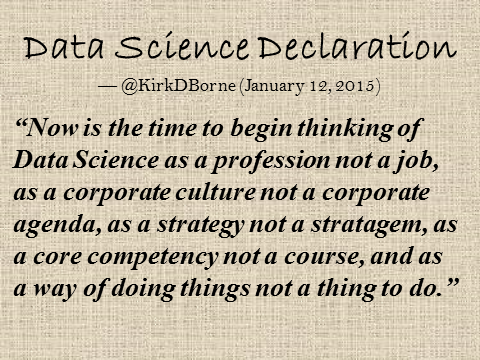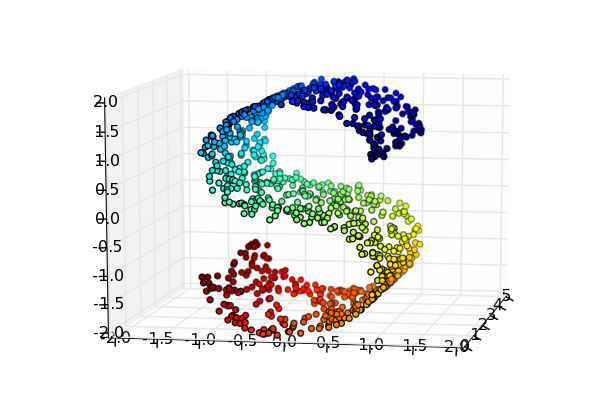
Data Science Declaration (by Kirk Borne, January 2015)
Welcome to Rocket-Powered Data Science! What is rocket-powered data science? No, it is not about rockets and space travel. But it is about advanced big data analytics for data-driven discovery, decision support, and innovation through data science. In this context, data science *is* rocket science. But, this rocket science is accessible to all: experts as well as newcomers, big enterprises as well as small businesses, technology power teams as well as individual explorers, and math/statistics wizards as well as lifelong learners at the start of their data science journeys.
In the article “Five Fundamental Concepts of Data Science“, we listed these principles:
1) Begin with the end in mind.
2) Know your data.
3) Remember that this *is* science.
4) Data are never perfect, but love your data anyway.
5) Overfitting is a sin against data science.
In the case of principle #3, we amend it here to say “Remember that data science is rocket science!” For best results (provable, reproducible, validated, and verified), we should consistently apply rigorous scientific methodology — the scientific cycle of measurement, inference, hypothesis generation, experimental design, evaluation, hypothesis validation and/or refinement. Therefore, we begin with the end in mind (including requirements gathering and analysis) — this is a basic principle for any system engineering, business program, marketing campaign, scientific experimentation, clinical study, or rocket science project!
Enjoy your visit here. Check out our blogs (covering the world of data science, data mining, statistics, big data, analytics, data visualization, linked data, and computational modeling); and look for more data science fun as we share our love of data.
#DataLovers-R-us!
Follow Kirk Borne on Twitter @KirkDBorne



